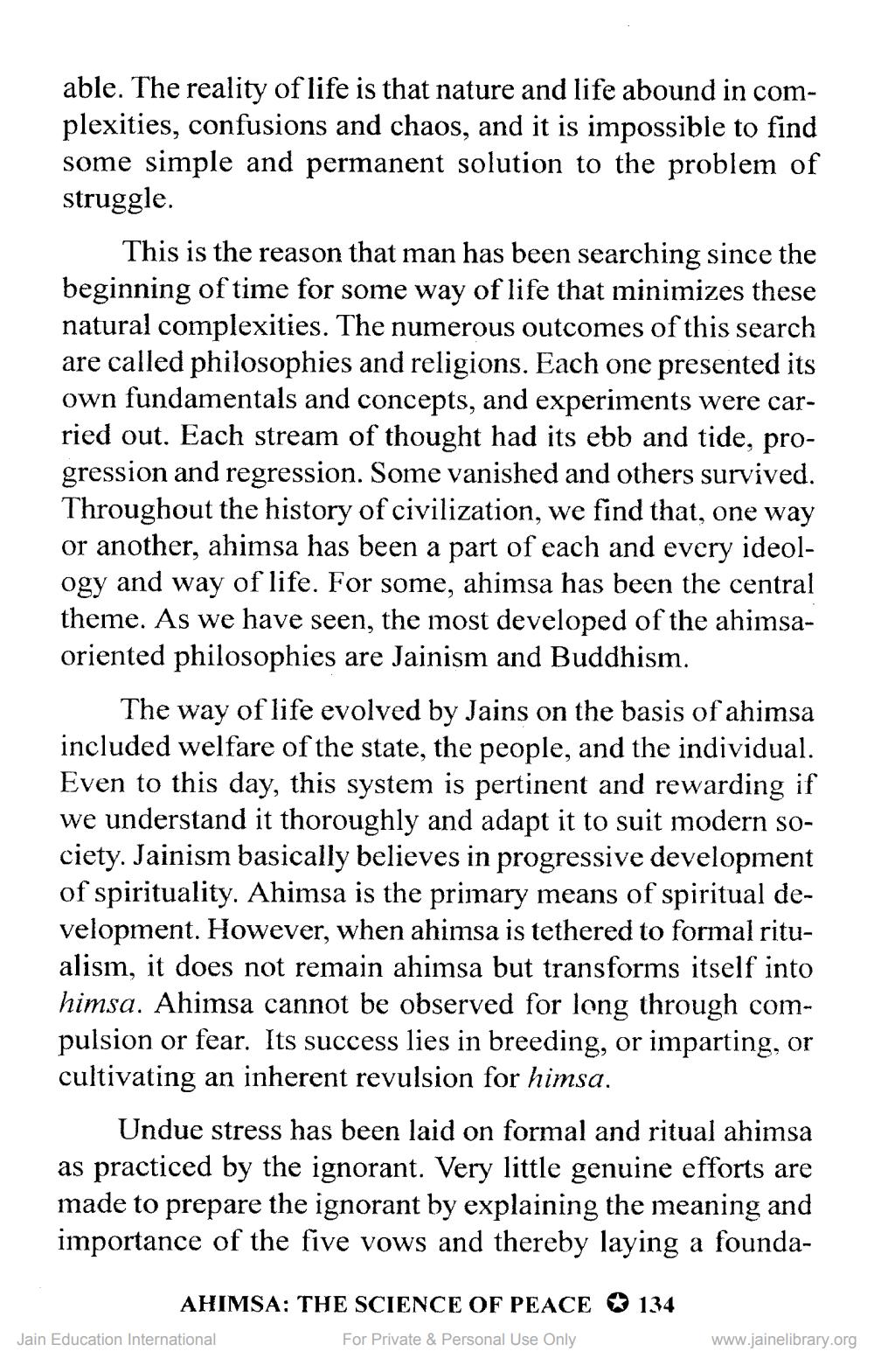________________
able. The reality of life is that nature and life abound in complexities, confusions and chaos, and it is impossible to find some simple and permanent solution to the problem of struggle.
This is the reason that man has been searching since the beginning of time for some way of life that minimizes these natural complexities. The numerous outcomes of this search are called philosophies and religions. Each one presented its own fundamentals and concepts, and experiments were carried out. Each stream of thought had its ebb and tide, progression and regression. Some vanished and others survived. Throughout the history of civilization, we find that, one way or another, ahimsa has been a part of each and every ideology and way of life. For some, ahimsa has been the central theme. As we have seen, the most developed of the ahimsaoriented philosophies are Jainism and Buddhism.
The way of life evolved by Jains on the basis of ahimsa included welfare of the state, the people, and the individual. Even to this day, this system is pertinent and rewarding if we understand it thoroughly and adapt it to suit modern society. Jainism basically believes in progressive development of spirituality. Ahimsa is the primary means of spiritual development. However, when ahimsa is tethered to formal ritualism, it does not remain ahimsa but transforms itself into himsa. Ahimsa cannot be observed for long through compulsion or fear. Its success lies in breeding, or imparting, or cultivating an inherent revulsion for himsa.
Undue stress has been laid on formal and ritual ahimsa as practiced by the ignorant. Very little genuine efforts are made to prepare the ignorant by explaining the meaning and importance of the five vows and thereby laying a founda
AHIMSA: THE SCIENCE OF PEACE 134 For Private & Personal Use Only
Jain Education International
www.jainelibrary.org




